I always hunt for trends. Why? It’s important to know what’s coming next so you can budget for and leverage the right tech that will propel your business forward. Last week CES 2018 concluded, one of the largest tech conferences in the world. Here’s my take on the top trends for VR from CES this year.
VR bounced back at this year’s show. In particular, we got a look at some very cool new headsets aimed at improving the overall experiences we have today. Lots of companies are eager to ditch the cord, remove the phone, and generally make it so VR headsets are self-contained wonders.
Vive Pro
Believe it or not, it’s been almost two years since the HTC Vive and Oculus Rift had their full, final retail releases! It’s time for an update, and Vive is the first out of the gate with its new Vive Pro. The headset increases the pixel count by 78 percent, hitting 2,880 x 1,660. That crams in 615 pixels per inch. HTC says fine text is finally readable, something that just wasn’t possible before.
The Vive Pro also includes built-in headphones with an amplifier, dual microphones, and a redesigned strap that HTC promises will make the headset more comfortable for people with glasses. It’s a big step forward all around.
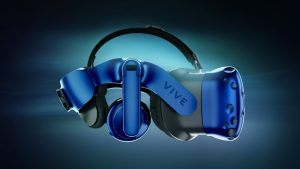
Plus, it’s (optionally) wireless. HTC announced a new wireless adapter that works over Intel 60GHz WiGig standard. It works with both the Vive Pro and the original Vive. A battery pack is added to the Vive or Vive Pro for wireless use.
Lenovo Mirage
At CES 2018, Lenovo debuted the first of the Google-inspired standalone VR headsets based on the Daydream ecosystem, the Mirage Solo. As a standalone headset, the Mirage Solo has everything built inside for a VR experience (display, battery, processing, etc), which means it doesn’t rely on a snap-in smartphone or external computer or console.
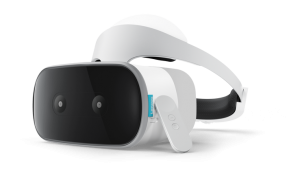
It’s also the first Daydream headset to debut with inside-out positional tracking (6DOF), though the controller retains only 3DOF (rotational tracking).
Looxid
Looxid uses eye tracking to apply the insane Type-A level of perfection to virtual reality. As users explore an environment — like a museum — in VR, the headset tracks both your eyes and brain activity, using an imposing set of electrodes embedded in the headband. The eye tracking can tell what you pay attention to, and the electrodes can tell what effect those stimuli have. Are you excited by the statue you’re looking at? Bored? Scared?
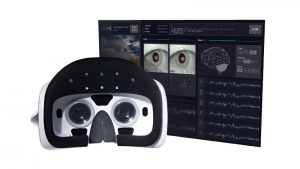
By incorporating brain activity, Looxid could help usher in an age of analytics that makes even today’s impressive web analytics look primitive.
Pimax 8K VR headset
This is the highest-resolution VR headset you’ll find. With two 4K displays up against our face, Pimax 8K VR headset is the future of premium VR headsets.
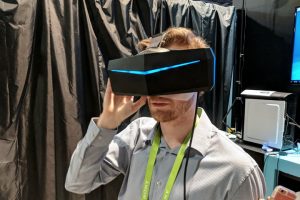
But the most important innovation is in the realm of field of view. The Pimax headset has a super-wide 200 degree field of view, which is much wider than other VR headsets on the market. The 200 degrees gets this headset closer to the 220 degree natural field of view of the human eye, meaning VR experiences feel that much more immersive.
Xiaomi-branded Oculus Go
Chinese electronics giant Xiaomi, manufacturer of the Go, will be selling its own branded version of the headset in China, which will be called the Xiaomi Mi VR Standalone.
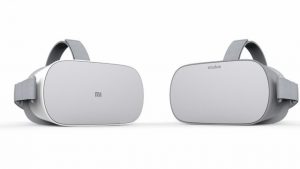
Curiously, the headset won’t run the Oculus store/software, instead it’ll run Xiaomi’s own Mi VR ecosystem. The Mi VR Standalone will be available exclusively in China while the Oculus Go will be available elsewhere worldwide.
Huawei VR2
While not strictly speaking a new headset, Huawei bringing its tethered headset to the US is kind of a big deal. This headset can connect to multiple sources with a cable, which could potentially mean you have a VR headset that will offer up fun from a PC and a phone separately.
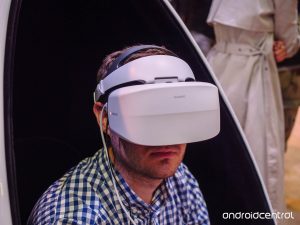
The headset has a fairly familiar look and feel, and could easily be confused with a Daydream headset with some of the software inside.
iComputingLabs VR Headset Pro
We are proud to bring our first VR headset to Indian market. With 42 mm lens, more than 110 degrees of Field of View and Anti-glare screen, our headset provides the best in class viewing experience with cardboard applications.
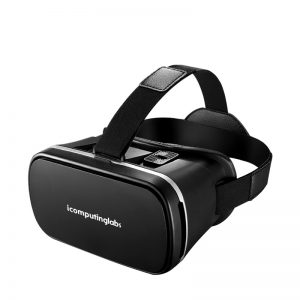
This VR headset can be worn while wearing glasses and also be effortlessly adjusted to cater to those with nearsightedness or farsightedness. With a built-in, IPD – Interpupillary Distance adjustment feature and adjustable screen distance, you will make the most out of your headset! Thanks to its comfortable, adjustable leather headband, leatherhead support and foam face cushioning; the entire family can comfortably wear our VR headset!
Amazon Link: https://goo.gl/uyrXuJ

